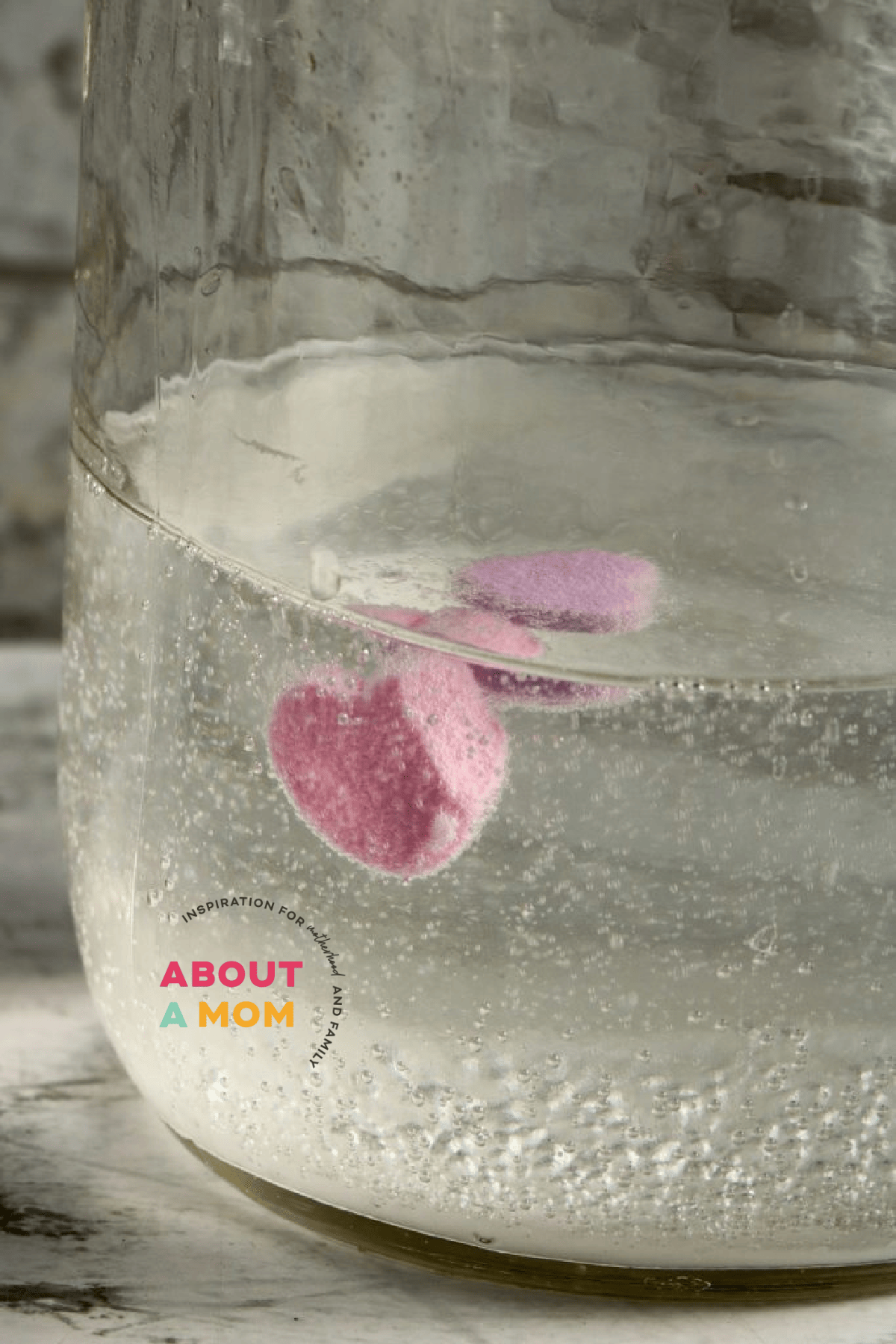This Valentine’s Day Science Experiment is a fun learning activity to do with the kids for Valentine’s Day. If you are looking to enjoy quality time with your children this Valentine’s Day or maybe a teacher looking for a science experiment to try out for Valentine’s Day, then give this fun Valentine’s Day science activity a try.
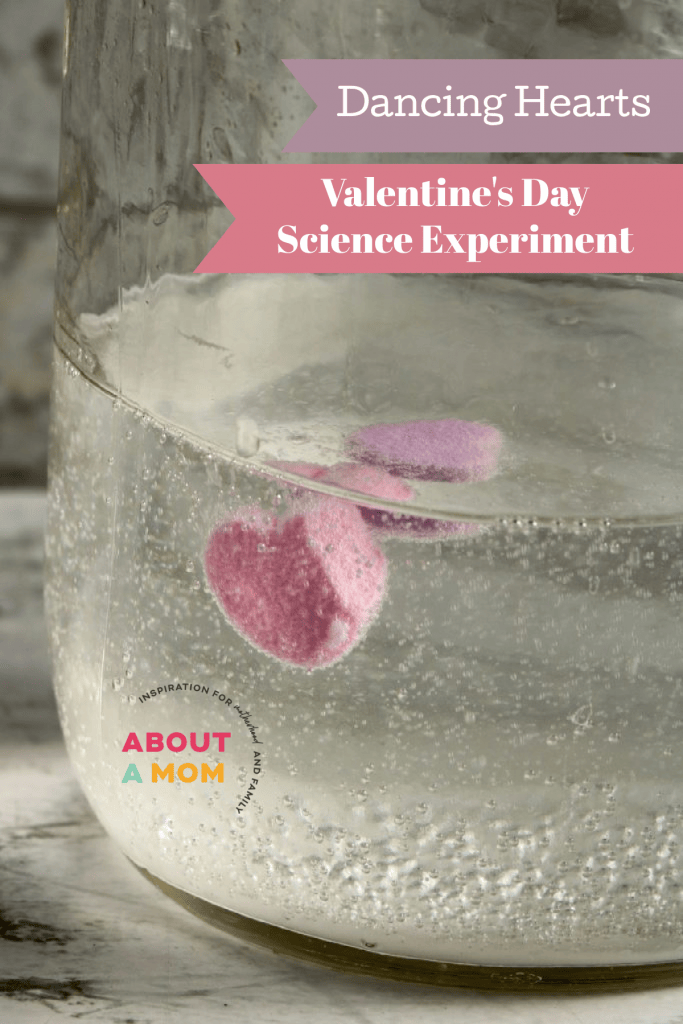
Children will enjoy watching the dancing hearts as a result of the baking soda and vinegar chemical reaction. This simple chemistry experiment for kids is a lot of fun.
Whether you are a teacher, parent or homeschooler you will love this simple chemistry lesson that uses Conversation Hearts. This is a terrific science activity to supplement e-learning or work into your homeschooling curriculum.
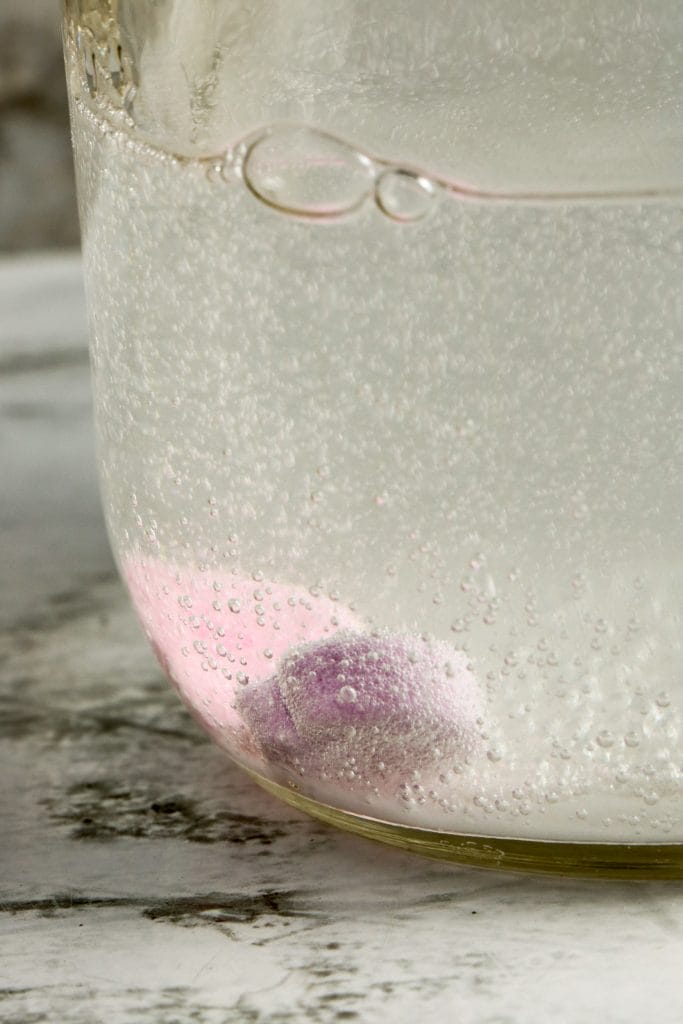
Valentine’s Day Dancing Hearts Science Experiment
This Dancing Hearts Experiment is a great way to create a science experiment right in your home. You will only need a handful of ingredients to make your candy hearts do a silly dance. This experiment is super simple and will be an amazing addition to your Valentine’s Day. Keep this experiment handy to try with all types of candy.
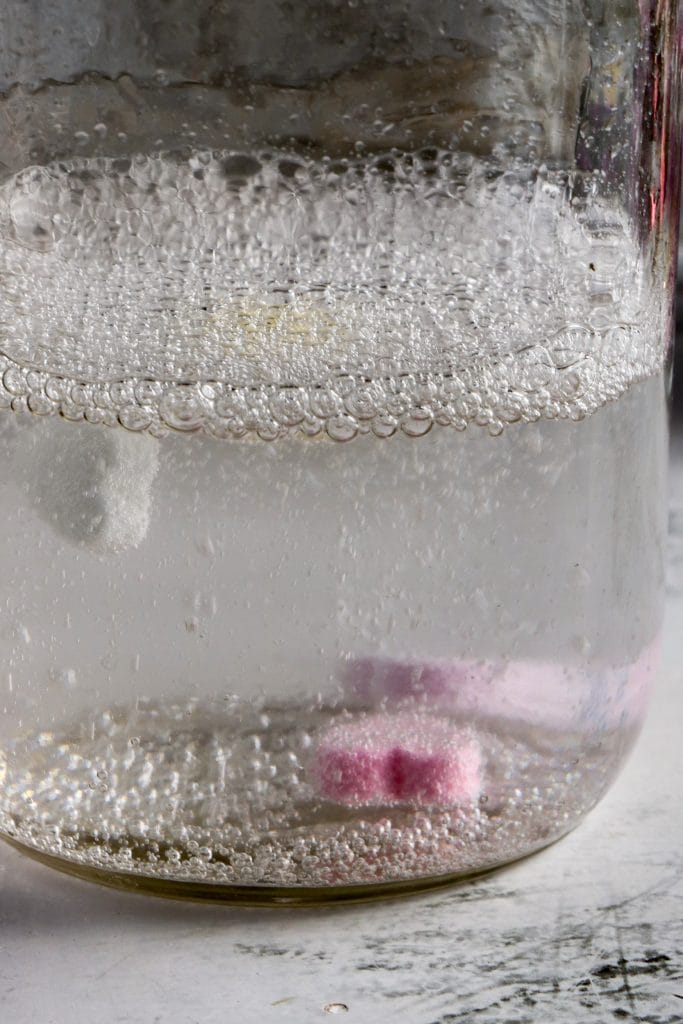
Can I Use Any Vinegar For This?
For this specific Dancing Hearts Experiment, you will be using regular vinegar. There are many types of vinegar and if you have something else such as apple cider vinegar, it will work just as well. The Vinegar is what will be causing the bubbly reaction in the experiment to make the hearts dance and come alive.
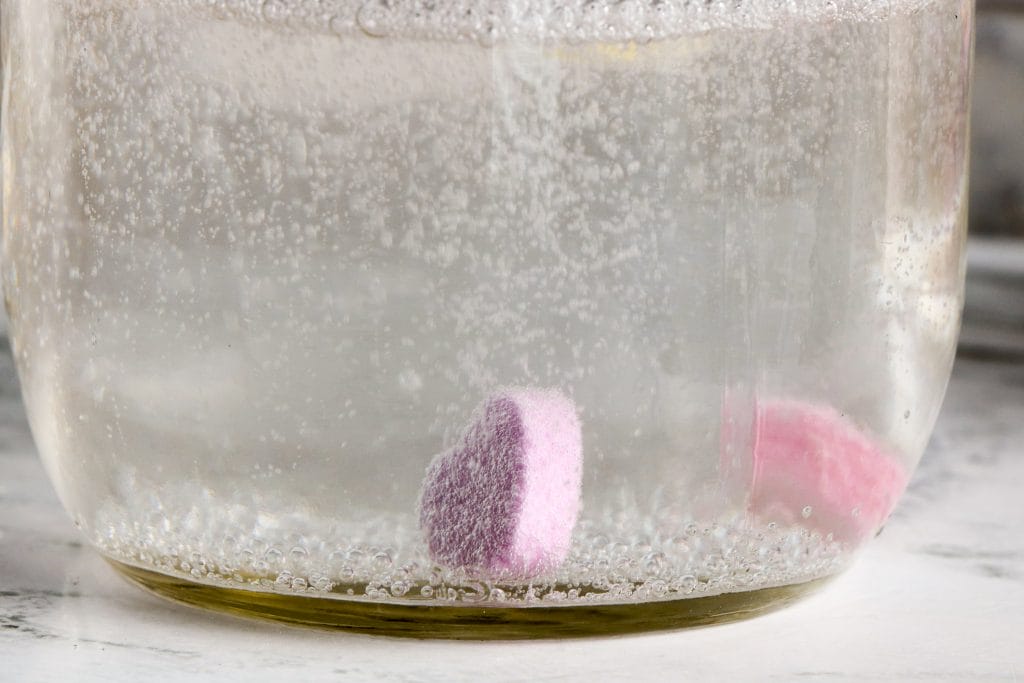
Do I Need to Use Special Containers for This Project?
For this Valentine’s Day science experiment, you don’t need any specific type of container. You can use a jar or plastic bowl to water the heart’s dance. Using a glass or clear bowl or jar will allow you to see the funny dancing hearts from all angles. I recommend using a clear jar or bowl for the best experience.

Supplies Needed for this Valentine’s Day Science Experiment
- 1 cup water
- 1 tablespoon baking soda
- ½ cup vinegar
- Jar or bowl
- Conversation hearts or other Valentine’s Day candy
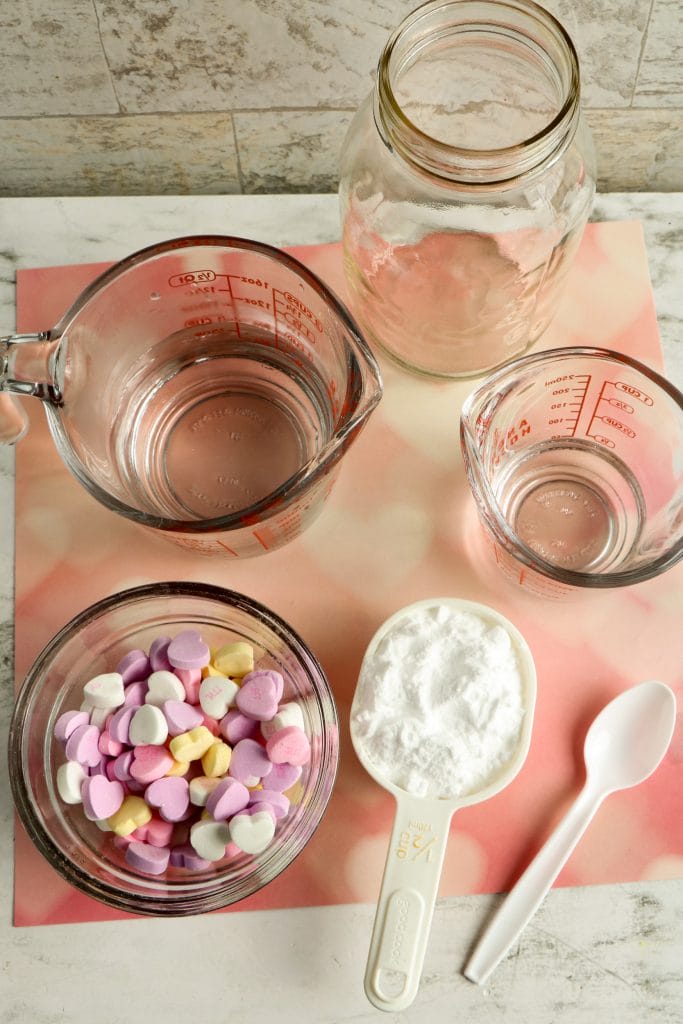
Instructions for Dancing Hearts Science Experiment
In a glass container, add baking soda to water.
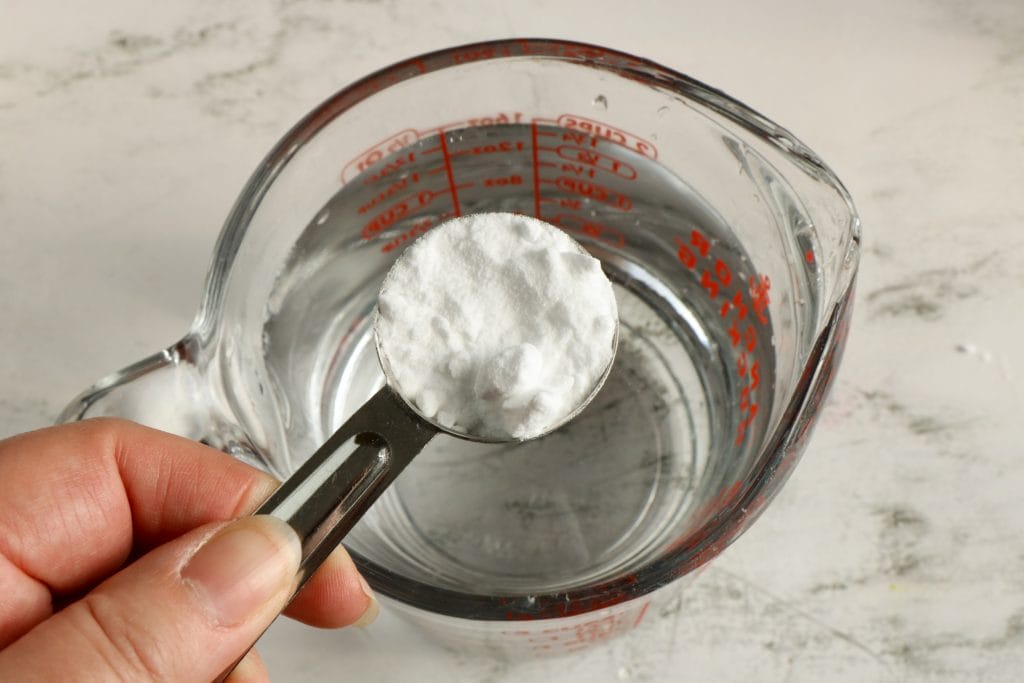
Mix the water with the baking soda until the baking soda is dissolved. Pour water into the container.
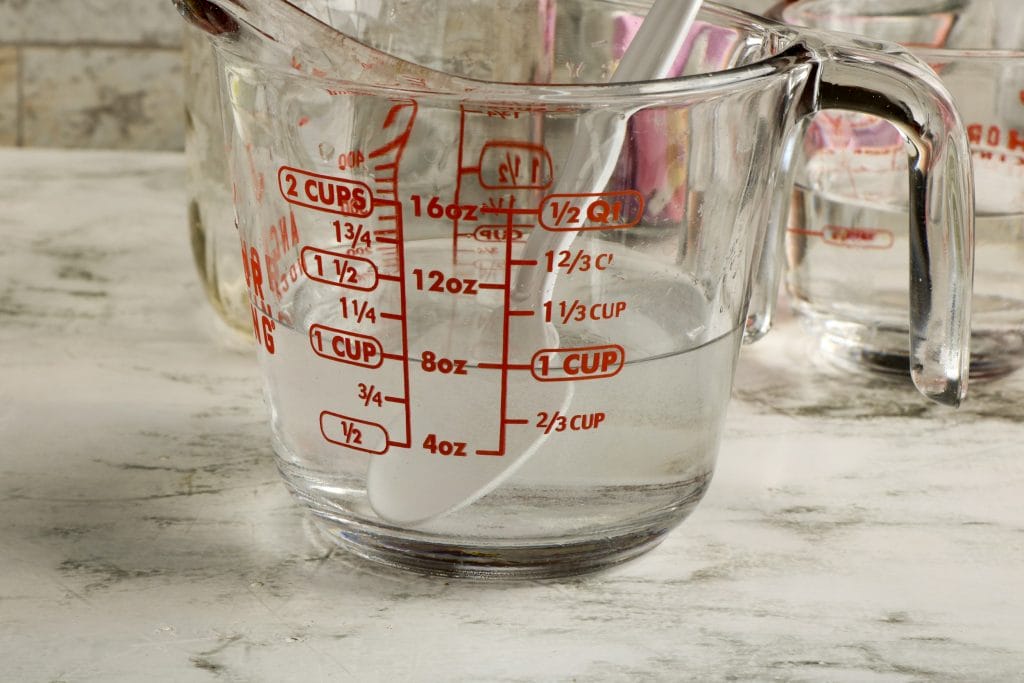
Add the candy to the container.

Slowly pour the vinegar into the container.
If the candy sticks to the bottom, give it a slight stir.
Even if the candy settles, continue watching as the hearts will flip over from time to time. The candy hearts will float to the top and bubble as the baking soda and vinegar mix letting out carbon dioxide.
Play with the amounts of vinegar and baking soda to create more or less bubbles.
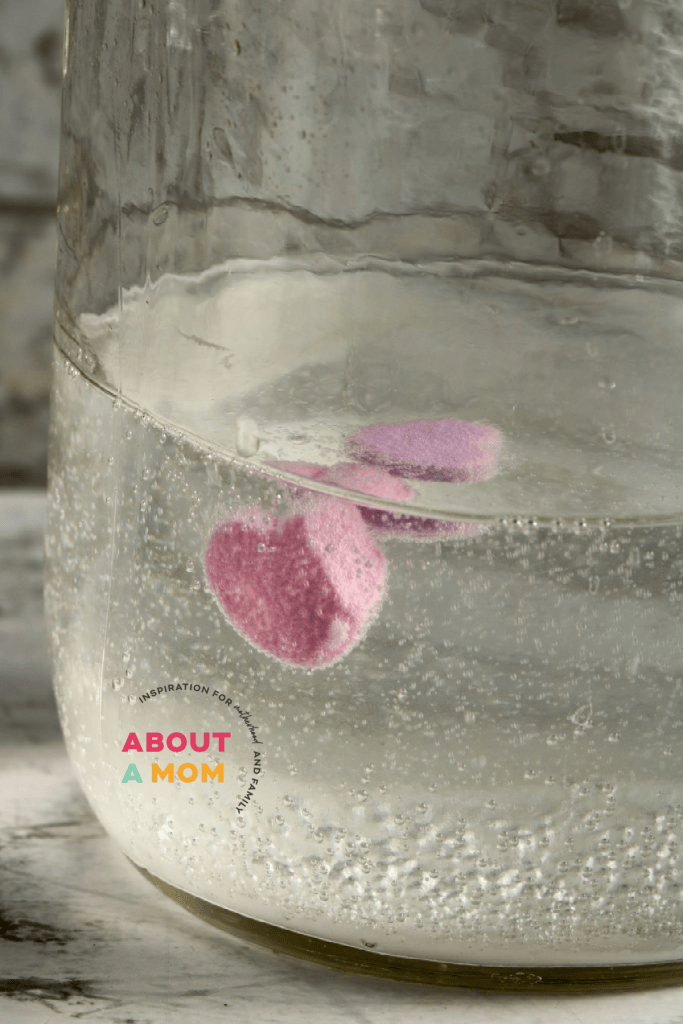
The initial chemical reaction will last from 3-5 minutes. Once the bubbles have settled you can stir with a spoon to get the hearts dancing again.
Ways to expand the activity:
- Change the type of container
- Change the type of candy
- Change the ratio of water to baking soda
Be aware that increasing the depth of the water too deep makes it harder to get the candy dancing as the vinegar cannot easily get to the bottom.
More Valentine’s Day Activities and Fun for Kids:
25 Fun Valentine’s Day Crafts for Kids
A Sweet Valentine’s Day Lunch for Kids
Textured Yarn Valentine Heart Craft
50 of the Best Printable Valentine’s Day Cards
Heart Shaped Chocolate Chip Cookies

